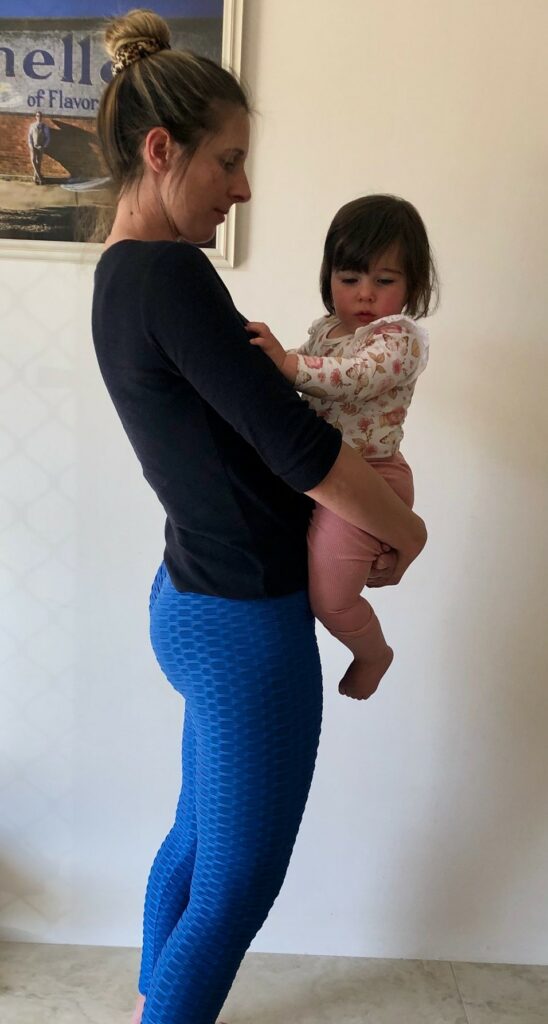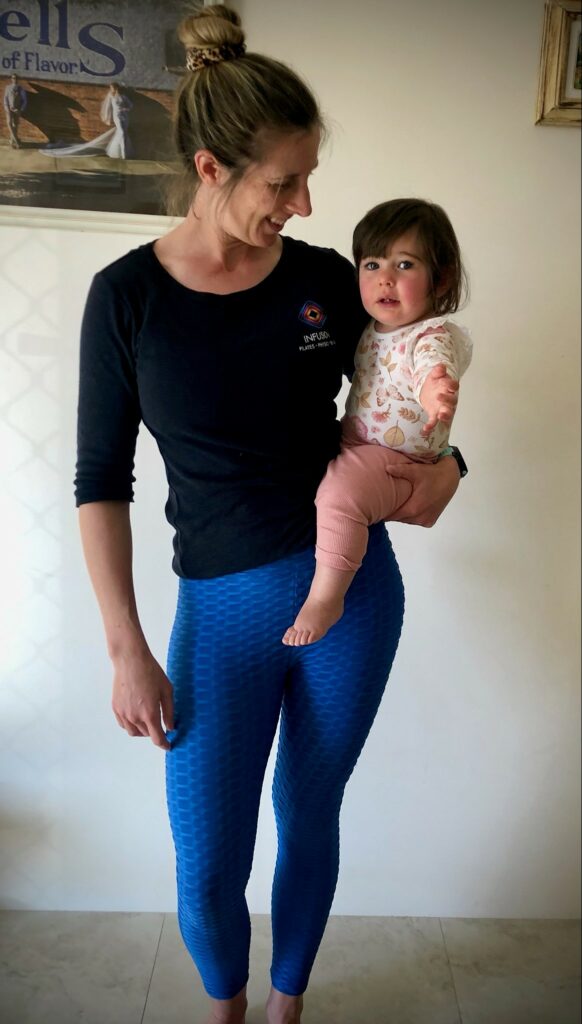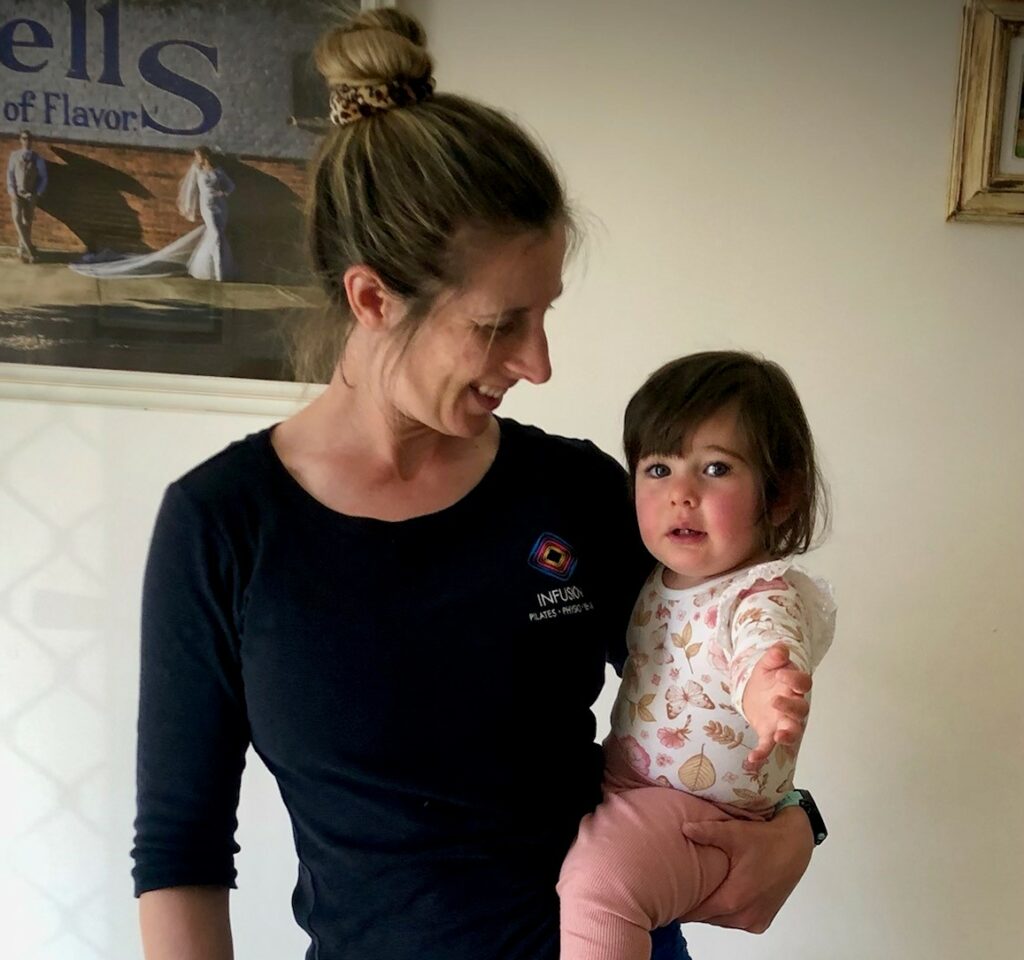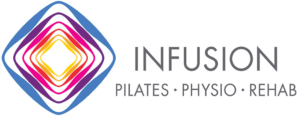Being a new mum is both enjoyable and hard! My hair is constantly pulled back in a messy “Mum bun” due to lack of time and to avoid getting an unwanted tug. What happened to my “Buns of steel”?
In the post natal period, the main focus tends to be on the baby, leaving little time for mums to focus on their own health and wellbeing. In this blog, I’ll show you some tips I used to stay fit and healthy after pregnancy, so you can too!
My postnatal story
My gorgeous daughter is now 1 year old and I thought given my background, I would not be susceptible to the usual aches and pains. I was fit, strong and healthy throughout pregnancy and spent the past 10 years working as a Physiotherapist & Pilates Instructor, and more recently GYROTONIC® instructor where I constantly assess, treat and manage multiple postural problems. Although keeping fit throughout pregnancy really helped, nothing can prepare you for the prolonged postures, awkward positions and sleep deprivation that new motherhood entails. Combined with a lack of time for myself, I noticed postnatally I was losing muscle tone, getting tight and achy, reverting to what I like to call “Mum Posture”.
One memory I have from hospital was when I was advised to start my pelvic floor exercises on the 2nd day after giving birth. This was the last thing on my mind, what with trying to navigate having a new born and attempting to breastfeed for the first time! However, I did start, and considered myself lucky; after years of training I had a good understanding of how to activate my pelvic floor. But what about those who don’t??
My advice for supporting your pelvic floor
- Before or during pregnancy, get your pelvic floor muscle activation checked, ideally on Real Time UltraSound (RTUS), by your trusted physiotherapist or a specialised women’s health physiotherapist, to ensure there are no issues.
- Do pelvic floor exercises through out pregnancy once you can correctly activate and relax these muscles.
- Get re-assessed postnatally (assessment for Pelvic Floor Muscle (PFM) dysfunction, Transverse Abdominus (TA) activation and any abdominal diastasis, as this important for daily life, but also before returning to exercise).
If you are in need of an experienced physiotherapist, click the button to meet our team.
Things to be aware of:
Bad postures for holding your baby when standing
Some examples are…
- Hips forward: gluteals switched off
- Over flexed thoracic spine: often associated with tightness, restriction of movement, pain and sometimes neural symptoms.
- Rounded shoulders: pectorals tight and weak posterior shoulder muscles
- Head forward posture: result of over flexed thoracic spine to compensate
- Hip shift: carrying always on one side


Contributing factors to poor mum postures
- Prolonged positions
- ie. feeding, carrying, rocking baby
- Using equipment and your body in a different way
- ie. using child carriers, lifting prams in and out of car, getting infants in and out of the car seat
- Awkward positions
- ie. bathing baby, feeding- breast or bottle, placing in cot
- Head down position
- ie. when looking down at your cute baby or checking they are feeding correctly
- Fatigue both muscular and mentally – may be due to repetitive lifting, lack of sleep or reduced rest and recovery, etc.
How to get your 'Buns of Steel Body' back
1. Correct your posture
- Be aware of your posture especially in sustained positions- like feeding
- Soften your hips back
- Centre your weight over your feet
- Broaden your chest with “smiling collarbones” image
- Lengthen the crown of your head upwards
2. Stretch
- Especially thoracic, pecs, quadriceps, hip flexors
I found these stretches really helped ease thoracic tension:
- Book openers
- Childs pose
- Foam Roller Snow Angel
- Chair thoracic stretch/ foam roller thoracic
Book opener
Childs pose
Foam Roller Snow Angel
Chair thoracic stretch
3. Strengthen and do the reverse of repetitive postures
- Bow-Squat (to reverse hip forward posture and switch gluteals on)
- Super Woman in 4point kneeling arm and leg extension (can use a small fit ball to give abdominal feedback/connection)
Tips
Try have some “You” time. Mums and bubs classes are great, but sometimes it’s nice to focus on just Mum. If you’re lucky enough to have someone to look after your baby for a couple of hours, getting into a Pilates class is great. Doing some home exercises/stretches each day, as well as being aware of posture during daily tasks is also extremely beneficial.
A healthy mum = a happy bub
- Set aside 30 mins each day for your exercise and stretches
- Focus on your posture during tasks such as lifting, rocking to sleep, feeding
- Get assessed by a trusted physiotherapist
- Seek treatment and advice if in pain
- Consider Pilates or GYROTONIC® exercise
Look after you and get your Buns of Steel back!
All the best,
Amy Anderson
Senior Physiotherapist
Edited by


